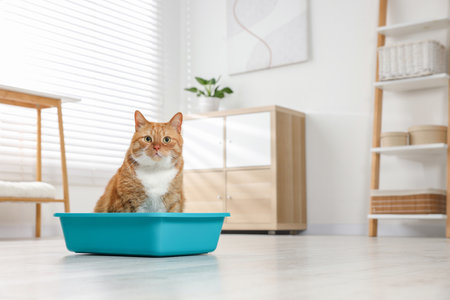Understanding Feline Diabetes
Feline diabetes, or diabetes mellitus, is a condition that affects a growing number of cats throughout the UK. In essence, it occurs when a cats body either cannot produce enough insulin or cannot effectively use the insulin it does make. Insulin is vital for regulating blood sugar levels, and without proper function, glucose builds up in the bloodstream rather than being used as energy. This can lead to a range of health issues if left unmanaged. The most common form seen in British cats is similar to Type 2 diabetes in humans, often associated with obesity or advancing age.
For cat owners across the UK, its important to recognise the early signs and symptoms of feline diabetes so you can act swiftly and seek veterinary guidance. Common indicators include increased thirst and urination, noticeable weight loss despite a healthy appetite, lethargy, and sometimes a dull or greasy coat. You may also notice your cat seeming more withdrawn or less interested in play. Understanding these symptoms and their causes is the first step towards providing your feline companion with the care they need. By learning about this condition, you’ll be better prepared to support your cat’s health and wellbeing on their diabetic journey.
2. Diagnosing Diabetes in Cats: What to Expect
When it comes to feline diabetes, early and accurate diagnosis is crucial for effective nutritional management. In the UK, veterinary practices follow a systematic approach to diagnosing diabetes in cats, combining clinical observation with laboratory testing. This process can seem daunting for pet owners, but understanding each step can help you feel more confident as you support your cat’s health journey.
The Role of Blood Tests
Blood tests are typically the first port of call for British vets when diabetes is suspected. Your vet will usually conduct a blood glucose test to measure your cat’s current sugar levels. In some cases, a fructosamine test may also be performed to provide an average blood sugar reading over the previous two to three weeks. These tests help differentiate between temporary stress-induced hyperglycaemia—a common occurrence in cats—and persistent high blood sugar that indicates diabetes.
Urine Samples and Additional Screening
Alongside blood work, collecting a urine sample is standard practice in the UK. The presence of glucose or ketones in the urine can confirm suspicions raised by blood tests and help rule out other underlying conditions. Vets may also check for urinary tract infections, which are sometimes associated with diabetic cats.
| Diagnostic Step | Purpose | What to Expect |
|---|---|---|
| Blood Glucose Test | Measure current blood sugar levels | A small blood sample taken from your cat’s ear or paw |
| Fructosamine Test | Assess average blood glucose over 2-3 weeks | May require an additional blood draw |
| Urine Analysis | Check for glucose, ketones, and infection | Your vet may collect a fresh sample or provide special litter for home collection |
Understanding Local Veterinary Practices
UK veterinary clinics are well-versed in managing feline diabetes and will guide you through each stage with empathy and clarity. It’s common practice here for vets to explain test results thoroughly and discuss next steps—whether that involves dietary changes, medication, or further monitoring. Most British vets encourage regular check-ups and will often offer nurse-led diabetic clinics for ongoing support, so you’re never left navigating this journey alone.
A Gentle Word for Cat Owners
If your cat is facing diagnostic tests for diabetes, remember that these procedures are generally quick and minimally stressful when carried out by experienced hands. By working closely with your local vet, you’ll not only get a clear diagnosis but also establish the best possible foundation for managing your cat’s condition nutritionally—tailored specifically to life in the UK.

3. Nutritional Guidelines Tailored for British Cats
Managing diabetes in cats involves a thoughtful approach to their daily diet, especially for pet owners in the UK where specific food brands and regulations apply. The cornerstone of nutritional management for diabetic felines is consistency—both in timing and content of meals. It’s best to select high-protein, low-carbohydrate diets, as these help stabilise blood sugar levels and support lean body mass. When considering commercial foods available in the UK, look for reputable brands such as Royal Canin Diabetic, Purina Pro Plan Veterinary Diets DM, or Hill’s Prescription Diet m/d, all of which offer formulas tailored specifically for diabetic needs.
Practical Feeding Advice for UK Cat Owners
Consistency is key—feed your cat at the same times each day, ideally just before insulin administration if prescribed by your vet. Wet foods are often preferable due to their higher protein and lower carbohydrate content compared to many dry foods. However, always introduce new diets gradually to prevent digestive upset. Be mindful of treats; choose those with minimal carbohydrates or use small portions of your cat’s main food as rewards. Consult your vet before making any dietary changes, as they can recommend UK-approved products that align with your cat’s health status.
Reading UK Pet Food Labels: What to Watch For
Understanding pet food labels can be daunting but is crucial for diabetic care. In the UK, all pet foods must display an ingredient list and analytical constituents (such as crude protein, fat, fibre, and ash). Prioritise foods where animal proteins appear first in the ingredients list and avoid those high in cereals or sugars (sometimes labelled as ‘carbohydrate’ or ‘derivatives of vegetable origin’). Look out for phrases like “complete diet” ensuring the product meets all nutritional requirements without the need for supplements.
Local Support and Ongoing Monitoring
Your local veterinary practice remains your most valuable resource. Many practices can connect you with feline diabetes support groups or recommend local pet shops stocking suitable foods. Regular weight checks and glucose monitoring are essential; adjustments may be needed as your cat’s response to their new diet becomes clear. By combining careful label reading with trusted UK pet food options and close communication with your vet, you’ll provide your diabetic cat with a stable foundation for long-term health.
4. Managing Mealtimes: Portion Control and Routine
Establishing a steady feeding routine is vital for cats with diabetes, especially within the busy context of British households. Cats thrive on consistency, and when managing feline diabetes, mealtime routines help to regulate blood sugar levels and support effective insulin management. Below you’ll find practical advice and suggestions that fit well with UK daily life.
Why Consistency Matters
Cats with diabetes benefit greatly from being fed at the same times each day. Regular mealtimes help your cat’s body anticipate food intake, which aligns well with insulin injections if required. This predictability can reduce stress for both you and your pet, fitting seamlessly into the average British routine—whether you’re working a traditional 9-to-5 or have a more flexible schedule.
Portion Control Made Simple
Overfeeding or inconsistent portion sizes can lead to weight gain or unstable blood glucose levels. It’s important to accurately measure food portions using kitchen scales or standard measuring cups. Here’s a simple guideline table to help you manage portions according to common UK cat food types:
| Cat Weight (kg) | Dry Food (g per meal) | Wet Food (g per meal) |
|---|---|---|
| 3-4 kg | 20-25g | 80-100g |
| 4-5 kg | 25-30g | 100-120g |
*Always check with your vet for tailored recommendations based on your cat’s needs.
Routine Suggestions for British Households
- If you leave for work early, consider splitting meals between breakfast and tea time (early evening).
- If your routine varies, try using automatic feeders to maintain regularity in your cat’s feeding schedule.
- If your household enjoys Sunday lie-ins, prepare ahead by setting out measured portions the night before.
Top Tips for Smooth Mealtimes
- Feed your diabetic cat away from other pets to prevent food stealing and ensure accurate intake.
- Create a quiet, comfortable feeding spot—perhaps in a utility room or cosy kitchen corner.
- Keep treats to a minimum and always count them as part of the daily food allowance.
Final Thoughts
By embracing portion control and establishing a dependable routine, you’re taking key steps towards managing your cat’s diabetes effectively. With a bit of planning—and perhaps some clever use of technology—it’s entirely possible to provide consistent care that fits perfectly within the rhythms of British family life.
5. Working with Your Vet and Support Systems
Managing feline diabetes in the UK is never a solo journey; it calls for a collaborative approach that places your cat’s wellbeing at the heart of everything. The cornerstone of effective care is building a strong partnership with your local veterinary professionals. British vets are well-versed in current diabetic management protocols, including dietary recommendations, insulin options available on the NHS or through private practices, and regular monitoring strategies tailored to your cat’s individual needs. Open communication with your vet ensures that any adjustments to diet or medication are made safely and promptly, especially as every cat responds differently to treatment.
Beyond the consulting room, tapping into support networks can make a world of difference. Many communities across the UK offer local pet owner groups—sometimes meeting at village halls, sometimes connecting online—where you can share experiences, seek advice, or simply find reassurance among those who truly understand the challenges of caring for a diabetic cat. These groups often have links to reputable sources such as Cats Protection or International Cat Care, both of which provide region-specific advice and updates on best practices.
Don’t underestimate the value of trusted friends, family members, or even neighbours when it comes to daily care routines. Enlisting their help can be invaluable if you ever need assistance administering insulin or adhering to strict feeding schedules during holidays or unforeseen circumstances. Remember: teamwork not only eases practical burdens but also provides much-needed emotional support during difficult times.
Finally, keep an eye out for local workshops or webinars hosted by veterinary clinics throughout the UK. These educational sessions often cover topics like home glucose monitoring, understanding food labels relevant to British brands, and recognising early warning signs if your cat’s condition changes. By actively engaging with these resources and fostering open dialogue with your vet, you’ll be giving your feline friend the best chance at a happy, healthy life despite diabetes.
6. Lifestyle Considerations and Prevention Tips
Caring for a diabetic cat in the UK involves more than just careful nutritional management; adopting a holistic lifestyle approach is equally important. British weather, local environments, and cultural habits all play a part in how you can support your feline companion’s health and wellbeing.
Indoor vs Outdoor Living
Many UK households keep cats strictly indoors due to safety concerns or because of living in flats, while others allow their cats outdoor access in gardens or secure spaces. For diabetic cats, indoor living offers greater control over diet and activity, reducing the risk of unexpected hypoglycaemic episodes. However, if your home environment allows safe outdoor time—such as a secure garden—supervised exploration can help stimulate your cat’s senses and encourage gentle movement.
Encouraging Gentle Exercise
Regular physical activity helps regulate blood glucose levels and maintain a healthy weight. In the often rainy and cooler British climate, it’s important to create opportunities for your cat to stay active indoors. Invest in interactive toys, climbing trees, or puzzle feeders that promote natural hunting behaviours. Setting aside dedicated playtime each day not only supports physical health but also strengthens your bond with your pet.
Keeping Active Year-Round
The UK’s variable weather can make consistent exercise challenging. On chilly or damp days, make sure your home has warm napping spots near windows so your cat can watch the world go by, and rotate toys regularly to keep things interesting. Even short bursts of play are beneficial, especially for senior or less mobile cats managing diabetes.
Prevention Tips for Feline Diabetes
Although some risk factors are genetic or age-related, you can take several steps to reduce your cat’s risk of developing diabetes. Feed high-quality, portion-controlled meals that suit their life stage and condition; avoid free-feeding carbohydrate-rich foods common in some commercial diets. Schedule regular vet check-ups—most UK practices recommend at least one annual visit—and monitor changes in appetite, thirst, or weight closely. By adopting these lifestyle measures and being attentive to your cat’s needs within the context of British home life, you’ll help ensure a happy, healthy future for your cherished companion.


